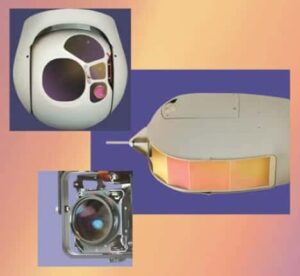Extremely low size, weight and power (low SWaP) intelligence, surveillance & reconnaissance payloads will be demonstrated at AUVSI in HoodTech’s booth #4615.
 Hood Technology, will showcase a variety of advanced stabilized imaging platforms and payloads for small unmanned aerial systems, unmanned aircraft, manned and unmanned land vehicles, ground systems, stationary mounts, and marine systems at the upcoming Unmanned Systems North America (AUVSI) show at Mandalay Bay, Las Vegas, NV, August 6-9, 2012. The 4-axis stabilized camera payloads for long-range imaging from moving platforms include the most highly capable SWaP -efficient intelligence, surveillance and reconnaissance (ISR) payloads available.
Hood Technology, will showcase a variety of advanced stabilized imaging platforms and payloads for small unmanned aerial systems, unmanned aircraft, manned and unmanned land vehicles, ground systems, stationary mounts, and marine systems at the upcoming Unmanned Systems North America (AUVSI) show at Mandalay Bay, Las Vegas, NV, August 6-9, 2012. The 4-axis stabilized camera payloads for long-range imaging from moving platforms include the most highly capable SWaP -efficient intelligence, surveillance and reconnaissance (ISR) payloads available.
HoodTech’s low size, weight and power (SWaP) camera turrets incorporate electro-optical (EO) cameras, cooled MWIR infrared (IR) imagers, laser markers and designators, to deliver unprecedented long-range imaging and laser capabilities from unstable, in-flight or other moving platforms. To date, the company has delivered over 4000 payloads and provided full motion video (FMV) on aircraft logging greater than 600,000 combat flight hours.
Small and compact, yet rugged and reliable through thousands of launches and retrievals, HoodTech’s advanced imaging EO/IR payloads can be customized and adapted to address specific requirements. Payloads can be specified with the Alticam Vision Processor (AVS) providing precision target tracking, moving object detection, and numerous image processing and payload control functions. Imaging sensors include customized zoom EO, and cooled continuous-zoom MWIR thermal imaging. Laser channels currently offered are NVG-compatible laser pointers and eyesafe laser rangefinders.
HoodTech’s AUVSI booth #4615 will also highlight Aerovel’s Flexrotor, a new table-sized robotic aircraft with vertical takeoff & landing (VTOL) which transitions to and from wing-born flight. The mission duration is expected to exceed 50 hours for this revolutionary small aircraft.


















